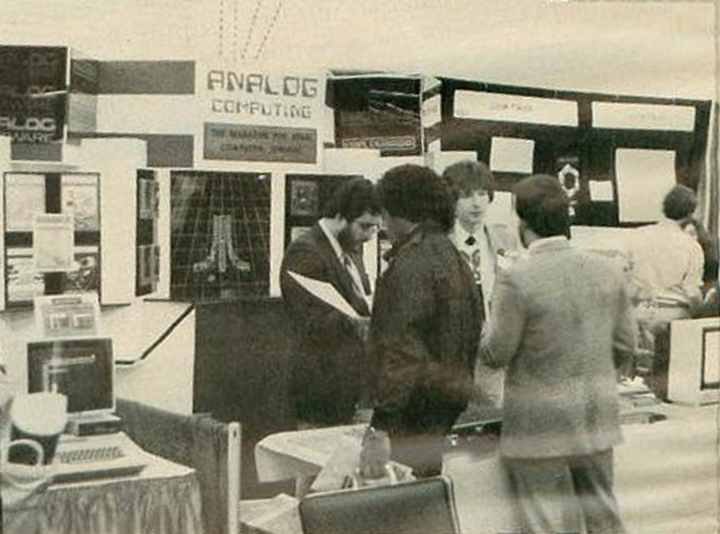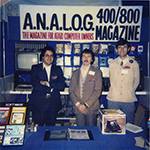
“This is from my point of view – after reading this you’ll get an idea of the amount of dedication everyone on the team put into the company. I can tell you no computer magazine had the in-house talent we did – or the friendships and family-like atmosphere. I also don’t want to downplay the hard work Michael put into the company and the number of times his wife called begging him to come home. We all have our own stories to tell.” – LHP)
ANALOG’s Origin and That Name
I met Michael DesChenes, my business partner at A.N.A.L.O.G., by chance while attending a Star Trek convention in NYC, I think in 1978. It was a random event and 5 minutes either way would have led to ANALOG, and everything associated with it, probably never happening. It turned out we were living in adjoining towns in central Massachusetts and following the convention we got together several times over the next year. I was involved in the newly founded personal computer industry, with a MITS Altair I had built in 1976, and Michael owned Star Fleet Uniforms – a business selling Trek uniforms, phasers, etc. During that time, we both coincidentally bought Atari computers and in the late summer of 1980 we saw a need for an Atari computer newsletter, as there were few articles out at the time covering those machines.
Many names were considered for the magazine and over dinner one night at the White House (a restaurant in Worcester, MA, not the better known one in DC) the names were bantered about. I wish I could remember some of the titles we discussed that evening, literally scrawled in napkins, however PopTop magazine (referring to the cartridge lids on the top of the 400 & 800) was one. I mentioned the word analog to Mike only because of the fact that Digital Equipment Corp was all around us in central Mass (where they started) and analog is sort of the opposite of digital. We tossed around words making up the six letters but when Mike came up with Atari Newsletter and Lots of Games, we knew that was it. In all of the years and dozens of shows we attended, only one dork ever challenged me on it. (“Heyyyyy, your computers are digital, not analog…”) I think readers just thought the acronym was amusing, as we did, and moved past it.
In late October 1980 Mike and I attended the National Small Computer Show at the NY Coliseum (one of the first computer shows ever) with a glossy 2-color flyer promoting the newsletter. We independently walked the show going from exhibitor-to-exhibitor to see what was new and try and drum up a few ads. The advertising interest was far more than we expected – too much for a mere newsletter. The magazine was born.
The First issue
At the same time, we were working on ANALOG we also opened a small Atari store in Mike’s dads house, which also doubled as an art gallery on the first floor. That Christmas season we started selling only Atari VCS 2600 games. We basically launched the whole ANALOG empire with $1000 each that Mike and I used to buy our Atari 2660 inventory. That holiday season through early 1981 we worked on the first issue, with the blessings of Atari.
By the time the first issue went to press in early February 1981, our $2000 had turned into $6000 from the 2600 game sales profits. We printed the first issue with a 2000 copy run. The printer we initially used ended up providing us with sub-standard paper, that we really hated, so we immediately began seeking a higher-end printer. That first issue ran with a 2-color cover (black and a light blue). Mike’s dad rendered the artwork used on the cover and I filled in the details of the star cruiser by hand with a black pen.
There were some really hack pieces of artwork in that issue. The comparison of five Star Trek games I wrote featured a profile image of the Enterprise; we just used a rubber stamp Mike had from his Star Fleet operation days. The same with the “art” on page 23 of that issue. The premiere issue also was the start of one of many of the ANALOG claims to fame – our commercial quality games and applications found in every issue. Charles Bachand wrote a game titled Maze Rider. The accompanying artwork was motorcycles that came from the J.C. Whitney parts catalog (the games was originally called Motorcycle Rider).After the first few issues of ANALOG were released Atari expressed some concern because they said it wasn’t just a newsletter like they had expected, but a more polished magazine and “close to something Atari they themselves might produce”. But they realized we could do a better job than they could, considered our support for them and let us do our thing. Looking back on those issues they were far from polished and certainly only a shadow of the magazines I churned out many years later, but it was the content that mattered.
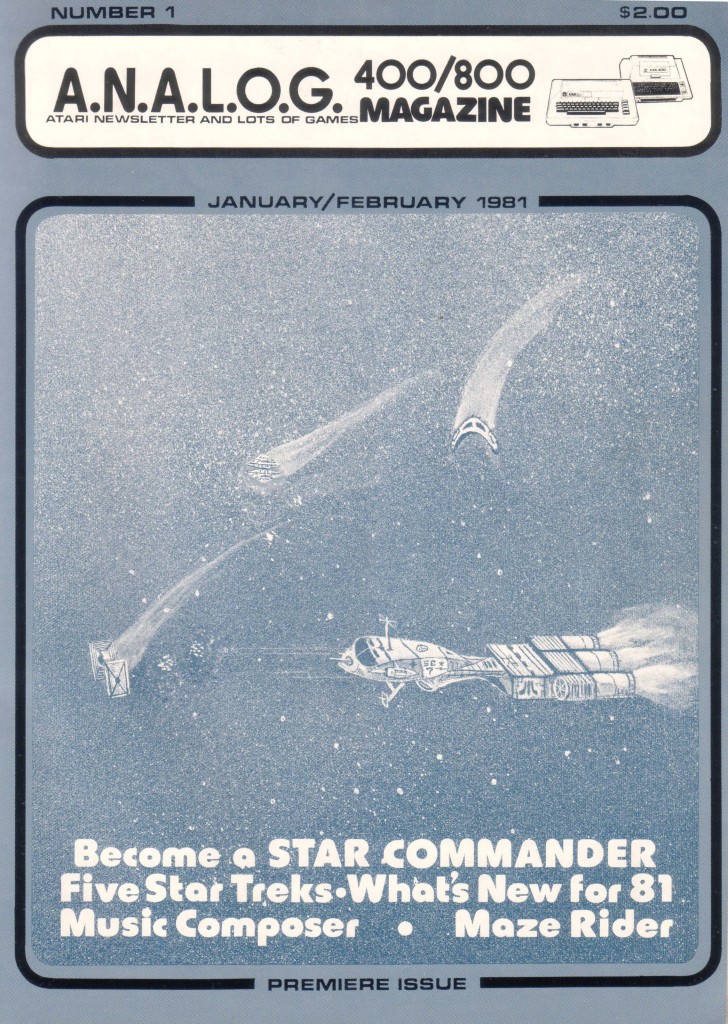
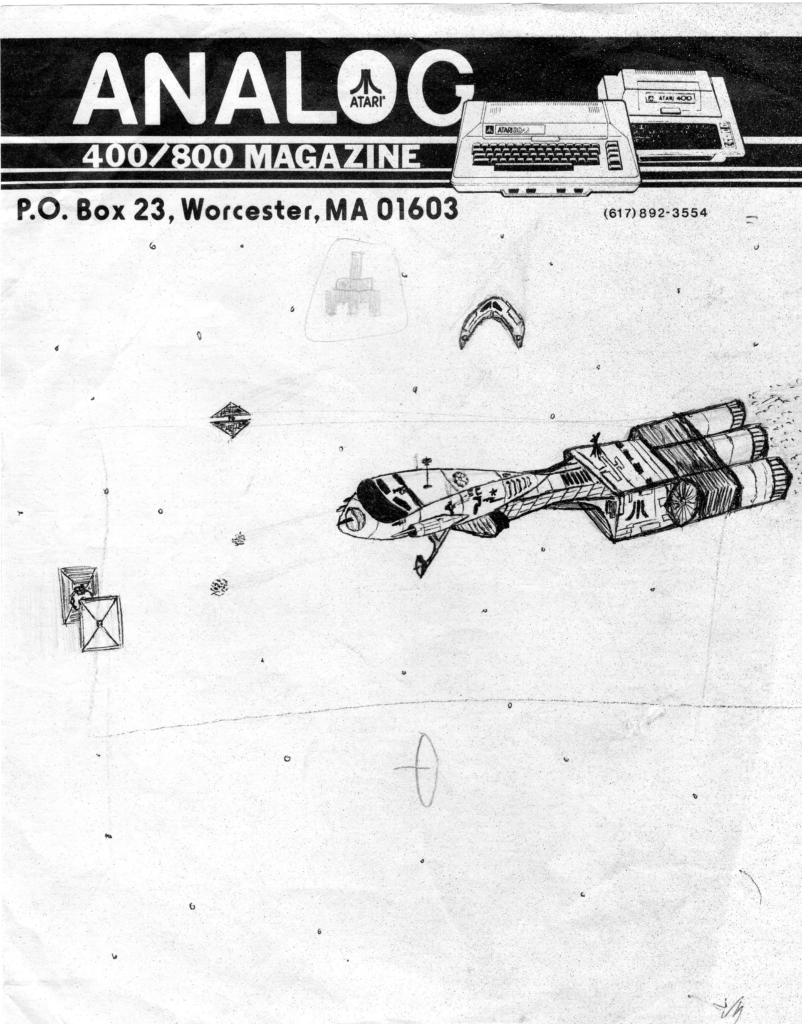
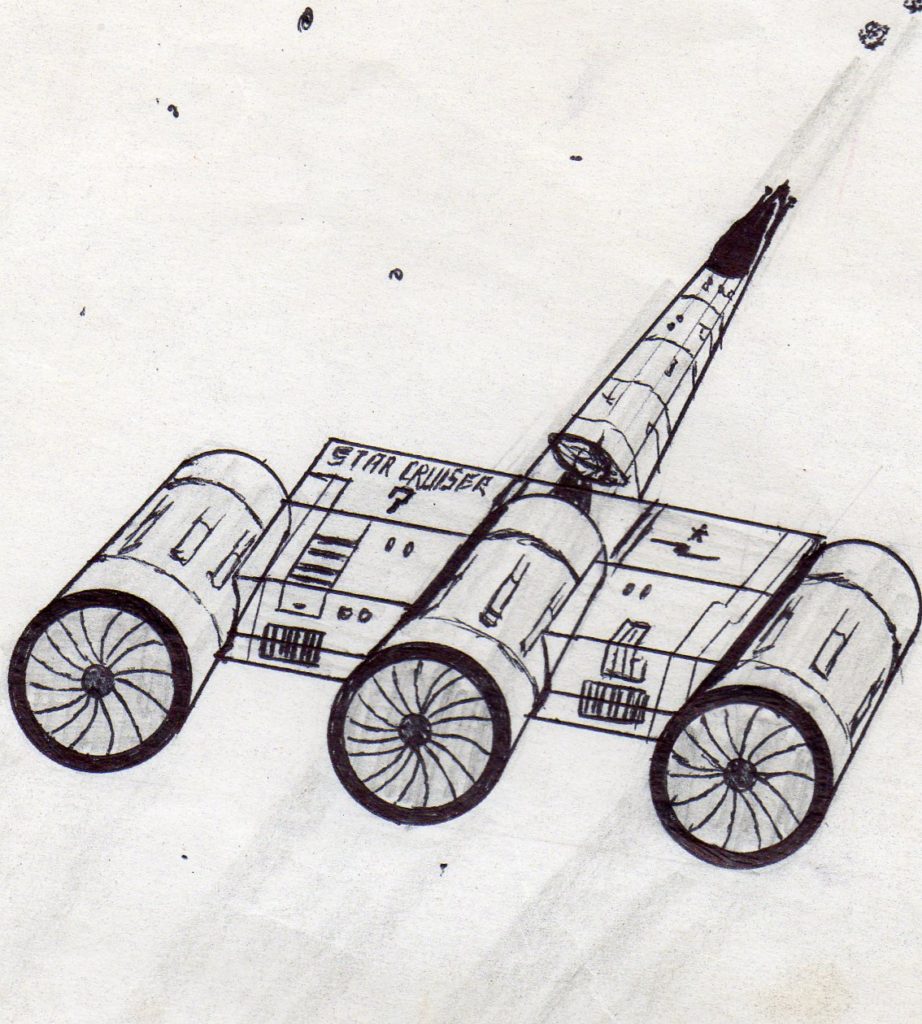
Our first employee
Let’s really turn on the Wayback Machine here. Charles Bachand (Charlie) was our first employee. I first met Charlie in 1975 while I was working at Hobbytown located in the mall in downtown Worcester, Mass. Charlie worked in the shoe department at Jordan Marsh and we became good friends eventually getting into personal computers in the really early days. We may not have been involved in home computers on day one, but we were sure there on day two. Charlie bought a MITs Altair 8800 in 1975 and I helped him with it as best I could at the time. I later bought the Altair 8800b and Charlie helped me, as I too had to build everything from kits: the PC, 8” floppy drive, CRT, memory cards, etc…thousands and thousands of solder connections. Our first PC game (remember PC meant Personal Computer and not an IBM compatible or Windows machine) was “Hit the Bit”, where you flipped a switch on the front of the computer as the LED above it lit up. If you timed both at the same time – you won! Charlie and I also made very frequent trips to The Computer Store in Burlington, MA – the first computer store in the U.S. (I think even ahead of The Byte Shop in Mountain View, CA.)
After Hobbytown I worked at Radio Shack. It was hard selling those TRS-80’s (because I hated them) with the 1930’s Buck Rogers styling and crummy monochrome displays. I finally said, “screw the commission” and steered people over to R&M Electronics, the only local Atari computer dealership around. Radio Shack was the worst job I ever had, and my manager was a moron. I hated it so much I said, “I will never work for anyone again”, and soon after that we started ANALOG. Also, around that time I worked for Apple selling Apple II’s at Christmas time at Lechmere near MIT in Cambridge. I sold only one the entire holiday season to the (really nice) department manager who felt bad for me…she bought it for her dad. (Thanks Adele!) The only Apple programs were on cassette and consisted of Biorhythm, checkbook balancer and a couple of games like the old Lunar Lander, it was a hard sell.
Another quick sidebar – for a couple of days another Radio Shack store right outside the mall was shorthanded and I had to go help out for a couple of days. There I met another Radio Shack employee, Brian Moriarty. (Read an old interview with Brian here.) We got to be friends and I would run into him at Radio Shack here and there until we went our separate ways. A couple years later Brian walked into our ANALOG Store (he was an ANALOG reader) and sees me there, “Oh you have an Atari computer too?”. “Yea, well, actually this is my company” I answered him. We offered him a job and he all but quit his job at the Bose Mountain that very day.
Yet another sidebar – flash-forward many years. I am publishing my PC LapTop magazine out of Beverly Hills, CA. A couple of representatives from Radio Shack HQ in Texas come in one morning to demo their new computers. We are sitting in the bagel café when I “thank them”. “For what?” they ask. “Well working for Radio Shack was so awful that it gave me the impetus to start my own company.” They just blankly stared at me and after a long pause one of them stutters out “…huh…great…”
More employees
Back in the 80’s desktop publishing wasn’t exactly mainstream. It was hardly anything, actually. We used an outside typesetting service where we brought them hardcopy printouts of the articles and they typed them into an expensive typesetting rig that they then spit out on a photographic paper in long thin strips called galleys. We picked these up (they were usually rolled into spools) and brought them back to the office and cut them to fit on a page fixed on using a hot wax. The wax was melted via high heat and occasionally you would hear a scream from the art room when someone accidentally touched the hot metal roller or melted wax with an elbow. We were that typesetters leading customer. (All I remember about the owners is that they were nice, ex-hippy types and one of them was in Maine one time and got in trouble for hitting a moose with his car when he was driving at high speed in reverse.)
Diane Gaw did most of our text entry there and she approached us one day suggesting we could bring it all in house. So, we left the typesetters and picked a $40,000+ Agfa Linotype then hired Diane. We later also hired Edie, the other typesetter there. After losing their two lead setters, and our account, I think the typesetters closed down. As the magazine grew, we expanded our office space pushing Bob the artist out and upstairs to his living space. The magazine was really growing, and we needed more help, so I called Jon Bell, who was living in Springfield, MO. I first met Jon and Tom Hudson at a Space: 1999 convention in Ohio, in 1978. We too became friends and kept in touch. Jon was always well read, literate and articulate so I thought he could make a good managing editor.
One day I called Jon telling him we needed him right now and we agreed I would come pick him up, driving from MA to MO, about 1700 miles. I think I actually drove out that same week, sometime during the winter. We were driving back to Mass, on a Highway from Hell in Pennsylvania. It was snowing and my Toyota Supra was a death machine in the snow. We were in the center lane and spun out. We did a full 360 and when we were at the 180 mark, we were facing backwards head-on with a woman driving a Saab. Even while still spinning we could see her take her hands off the steering wheel and scream. I regained control of the car back at the 360 point and we are laughing so hard (because we didn’t die) we had to pull over. I hit one of those construction sawhorses with a blinking yellow light, which scuffed my car a bit. I was pissed so Jon and I open the Supra’s hatch, threw in the sign, with the yellow light still flashing, and drove off. ANALOG might have ended that day if the screaming lady had slammed into us leading to a multi-car pile-up near Scranton.
Tom Hudson was one of Jon’s best friends and worked at a bank, also in Springfield, MO, performing backups at night. Jon was bugging us to bring him out to work at ANALOG too. Tom started doing some work for us out there and then moved out to Mass. He asked if I could find him a new car before he arrived, so Jon & I went and picked him out a nice metallic chocolate brown Honda Accord. When Tom moved out and said he likes the brown color, Jon commented how it was a nice shade of green. I found out that day our managing editor was slightly colorblind.
ANALOG Adventures…some odd and strangely odd yet true anecdotes
• There was a small horse pasture across the road and mail room manager Pat Kelly used to frequently comment, “Hey there’s a horse out there.” One day he says, “Hey there’s a cow out there. In our parking lot”. We run out and see this cow trotting along, it just turned to look at us as it continued on its way.
• Michael comes over to me one day and tells me that Mick Jagger is in Bob’s art studio. Sure, enough there he was, getting something framed accompanying the owner of Long View Farm Studios, a recording studio a bit down the road. Check it out – it’s pretty famous.
• At one point, nearly the entire staff bought a new car within a very short time period and passerby’s on Rt 9 thought we operated a used car lot.
• We frequently went out for lunch, especially Fridays. Occasionally we’d head west out to the country (towards Long View Farm Studios actually). One day Jon, contributing writer Craig Patchett, and I are driving my hopped-up Honda Prelude and this psycho is trying to pass us on a narrow road. This just wasn’t gonna happen. Jon yells out “quick – put in the James Bond tape” We are getting fired up on 007 car chase tunes and start weaving so this dude can’t pass. Finally, he gets up next to us and we see his arm sticking out the window holding a knife. We go to the town of Spencer Police and report this guy. They take depositions from all of us – I remember Jon’s “…he branded a knife in a threatening manner” comment. The driver of the other car, J Buyer, was a bicycle salesman from NJ. At a later date we met him at the courthouse for an arbitration hearing. Jon Bell’s recount of the story:
“I remember when Lee and I went to that arbitration hearing to confront J Buyer about holding a knife out his car window after we got into that ‘passing/pissing’ match with him (on the way to get a fried clam lunch with Craig Patchett.) We didn’t bring a lawyer, but Buyer had one — a real sleazebag. As we were arguing with his lawyer about why his client would do such a thing, and the lawyer said something about why we didn’t bother bringing our own legal counsel, Lee said, ‘hey, we know what we saw, but if we’d wanted to, I could’ve hired the best lawyer in the state!’ JB’s attorney sneered, ‘Oh, and who would that be?’ Lee’s instant response was, ‘Well, you’ll notice we didn’t hire YOU!'”
Even the arbiter started laughing at that one, and the sleazebag lawyer did a double take and realized that we’d made him look like a jerk.
• Jon, Tom & I were good friends. We worked countless hours together and hung out in our free time together. We got an apartment and filled it with gadgets and our stuff. When visiting one day Brian Moriarty said we lived “in electronic squalor”, as our living room was a TV and VCR on the floor with a stereo and beanbag chairs.
• Tom Hudson and I went out to the West Coast Computer Faire in the early 80’s and out west coast Editor-at-Large, Marc, picked us up in his Toyota Supra and was our chauffeur for the few days we were in the Bay area. After a long flight from Boston we were driving to the hotel when one us asks Marc what the hell we were listening to. Apparently, his grandfather was an attorney and had recently won the largest, or one of the largest, settlement cases in California and we were listening to the trial. We told him to shut it off! Marc worked for us for a while and did a decent job filling his articles with interesting Atari news but after a time the submissions were turning to gibberish. We finally had to make the call, so Jon Bell and I called him and fired him over the phone, with Marc blubbering and pleading not to. A few years when by and we heard he was Larry Ellison’s right-hand man at Oracle. After he was let go from there, Mac Benioff went on to found Salesforce.com.
For more ANALOG stories visit Tom Hudson’s “Klanky the Robot” site where Tom, Jon Bell, Kyle Peacock and I have collaborated on some additional memories.
Be sure and check out my small collection of ANALOG pictures in the Photo Gallery section of this website.
